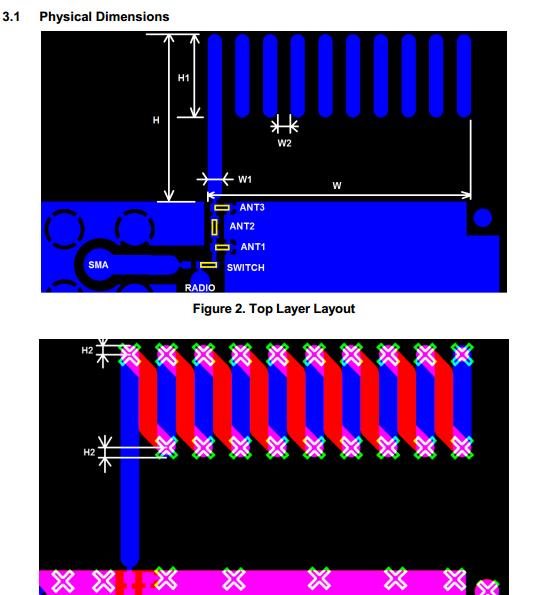Other Parts Discussed in Thread: CC-ANTENNA-DK2,
NOTE: My PCB requirements are thickness 0.8mm and 2 layered.
This is the single ended antenna operation schematic for CC1350 which the CC1350 STK implements. I want to implement it too because it needs smaller number of passives.
But I need some help with the antenna and matching circuit. I looked into various antenna design notes from TI and decided that I will go with the following two antennas –
2.4GHz
http://www.ti.com/lit/an/swru120c/swru120c.pdf
Because it is already matched to 50ohms, no matching is needed. Hence in the above schematic I will just have to remove ANT2 and ANT3 or replace them by 0 ohm but keep everything before them as is?
Q1) Is this correct assumption for my design ?
868MHz
I decided to go with the following in DN038 as the more efficient was just too big.
Design Note DN038 - http://www.ti.com/lit/an/swra416/swra416.pdf ( NOTE: It uses a 2 layered PCB of 0.8mm thickness which is exactly what my PCB would be. )
However there are some differences that confuse me. First of all this is “similar” to the antenna on the CC1350 STK but NOT EXACTLY SIMILAR. The STK has one more “rotation / thread" if you will and so does the CC-ANTENNA-DK2 design http://www.ti.com/lit/an/swra496/swra496.pdf
NOTE:
CC ANTENNA DK has 2 layered PCB with thickness 1.54mm.
CC1350 STK is 4 layered with thickness 1.5mm.
DN038 Antenna is as follows -
CC1350 STK ANTENNA is as follows -
Q2) Also in the Design Note DN038 it is mentioned that the antenna is NOT matched to 50 ohm , so I need 1pF and 12nH to make its impedance 50 ohm. For that I will have to remove ANT4 and ANT5 in the above schematic with 1pF and 12nH respectively and keep everything before them as is ? Is this correct ?
Q3) Why is the antenna slightly different (i am guessing because of the pcb thickness)? Should I implement the one in the Design Note DN038 or as in the CC ANTENNA DK/ CC1350 STK ?
In the CC-ANTENNA-DK2 Antenna Measurements Summary ( ) Page 29, Section 2.1.6 dosen’t say anything about its actual impedance. And for matching it possibly says to use 5.6nH inductor only.
) Page 29, Section 2.1.6 dosen’t say anything about its actual impedance. And for matching it possibly says to use 5.6nH inductor only.
Q4) What exactly should I do for the SubGHz antenna ?
I do NOT have access to a VNA and it may not be possible for me to get access to one. So I want to make one that has the most probability of working without the need of a VNA.




